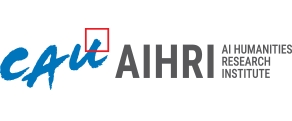Human-Machine Collaboration Pyung-Jong Park HK Reasearch Professor, Chungang University This study explores artificial intelligence and creation, in terms of machine aesthetics. Artificial intelligence is evolving through machine learning, and producing artworks on its own. In fact, current artificial intelligence is widelyconsidered an “imitation machine” that learns and imitates past works, rather than being truly “creative machines.” Can such “imitation machine” works be considered artistic acts? According to the current art paradigm, only those who produce “creative” works are regarded as “authors.” An artwork is a product of creativity, not imitation. Whether customary or legal, imitations inherently oppose creation; they are not authentic works. Artificial intelligence produces artworks by algorithms and programs, and programs can be designed to produce something unpredictable. In other words, artificial intelligence can produce “creative” output. Furthermore, it is impossible to create something fundamentally new, given that all creative human activities involve the process of writing their own rules based on acquired knowledge. That is, “creativity” is not only a contradiction in itself but also a mythical concept. According to the current art paradigm, only humans can be considered “creative” authors. However, the concept of authorship is gradually expanding. The notion that artificial intelligence or programmers cannot be creators is challenged. The significance of the problem is less about the “subject” of creation than its “result.” A real program can be “post-gramme” rather than “pro-gramme.” We should consider the collaboration of humans and machines in the machine age. Humans have imitated machines, and machines have imitated humans. In the process, humans have extended beyond their corporealboundaries . Technology has always been the human’s extension. In that sense, it is an opportune time to revisit Foucault's question about authorship, and ask: “Qu’importe qui crée?”
Key words: Artificial Intelligence, Program, Author, Creativity, Creative Machine, Imitation Machine |

